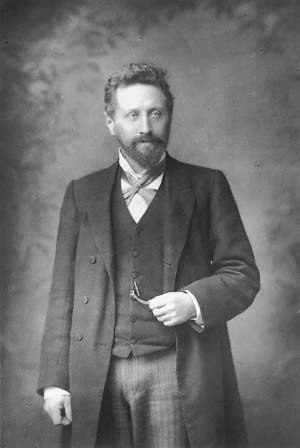William Edward Ayrton (William Edward Ayrton)

Ayrton was born in London, the son of Edward Nugent Ayrton, a barrister, and educated at University College School and University College, London. He later studied under Lord Kelvin at Glasgow. Ayrton’s second wife, Hertha Marks Ayrton, whom he married in 1885, assisted him in his research, and became known for her own scientific work on the electric arc and other subjects. In 1899, Ayrton supported Hertha on her way to being elected the first woman member of the Institution of Electrical Engineers and the Royal Society awarded her a Royal Medal in 1906. Their daughter Barbara later became a Labour MP, and grandson Michael Ayrton, was an artist and sculptor.
Previously, Ayrton had been married to a cousin, Matilda Chaplin (1846–1883); their marriage had taken place while Ayrton was on home leave from India and Matilda was involved in the Edinburgh Seven campaign to open medical education to women. Chaplin and Ayrton’s daughter was the feminist and author Edith Ayrton, wife of Israel Zangwill and mother of Oliver Zangwill. In 1868, Ayrton went to Bengal in the service of the Indian Government Telegraph department, where he invented a method of detecting faults in lines, which was of great benefit in the maintenance of the overland communications network. In 1873, Ayrton accepted an invitation from the Japanese government as Chair of Natural Philosophy and Telegraphy at the new Imperial College of Engineering, Tokyo. He is credited with introducing the electric arc light to Japan in 1878.
On his return to London six years later, Ayrton became professor of applied physics at the Finsbury College of the City and Guilds of London Technical Institute, and, in 1884, he was chosen professor of electrical engineering, or of applied physics, at the Central Technical College, South Kensington. He published, both alone and jointly with others, a large number of papers on physical, and in particular electrical, subjects, and his name was especially associated, together with that of Professor John Perry, with the invention of a long series of electrical measuring instruments, including the spiral-spring ammeter, and the wattmeter. They also worked on railway electrification, produced a dynamometer and the first electric tricycle. Ayrton is also known for his work on the electric searchlight. Ayrton died in London in 1908 and is buried in Brompton Cemetery.
Born
- September, 14, 1847
- London, United Kingdom
Died
- November, 08, 1908
- London, United Kingdom
Cemetery
- Brompton Cemetery
- London, United Kingdom


